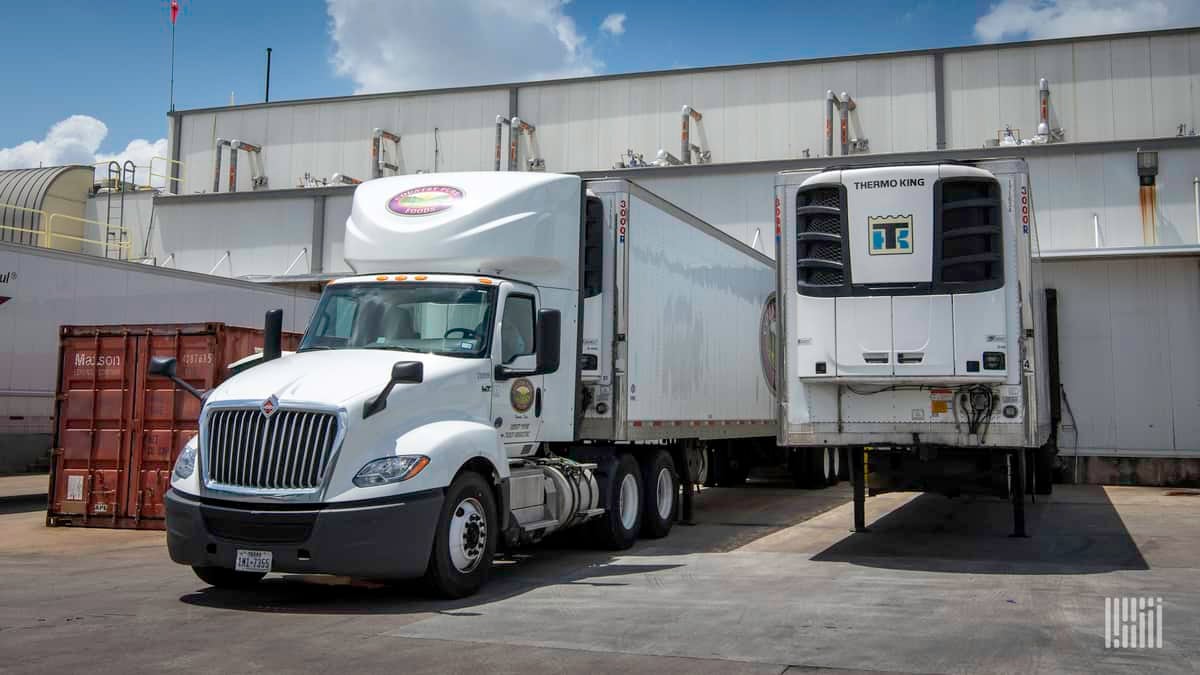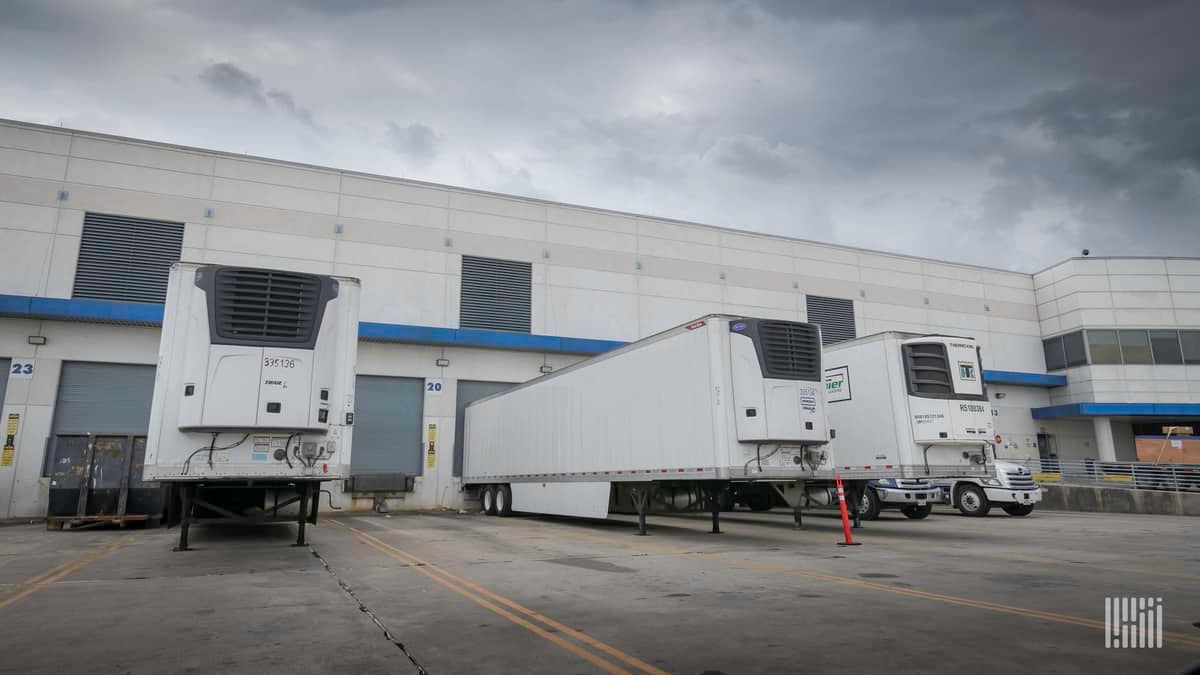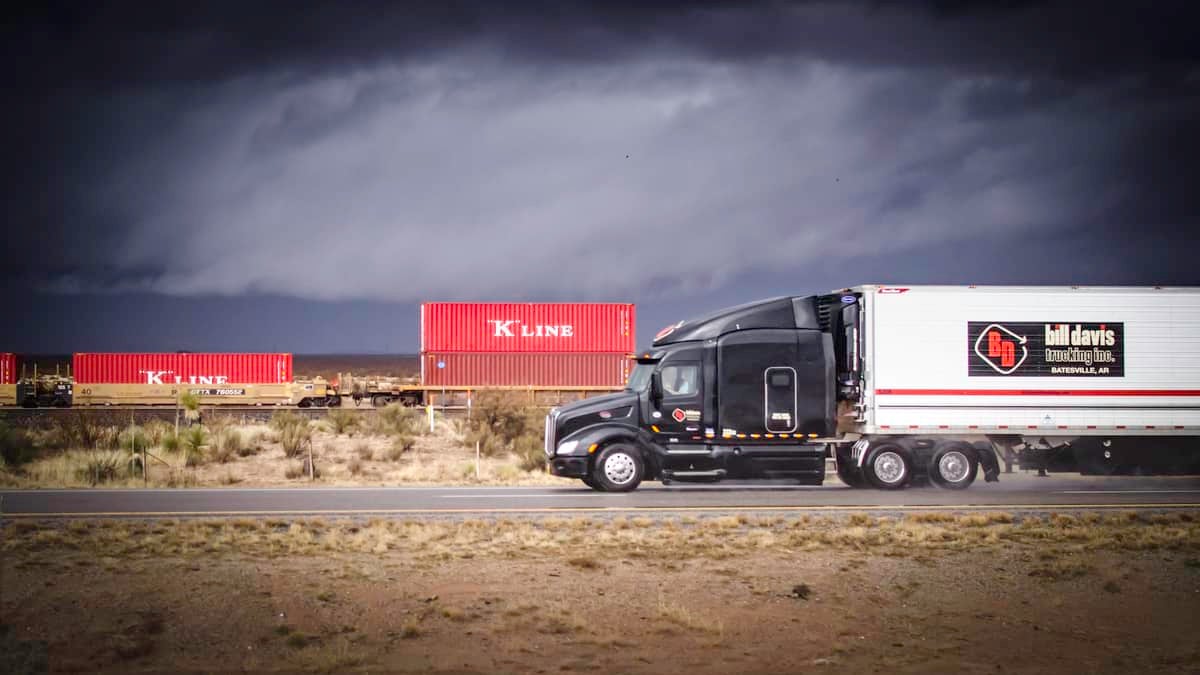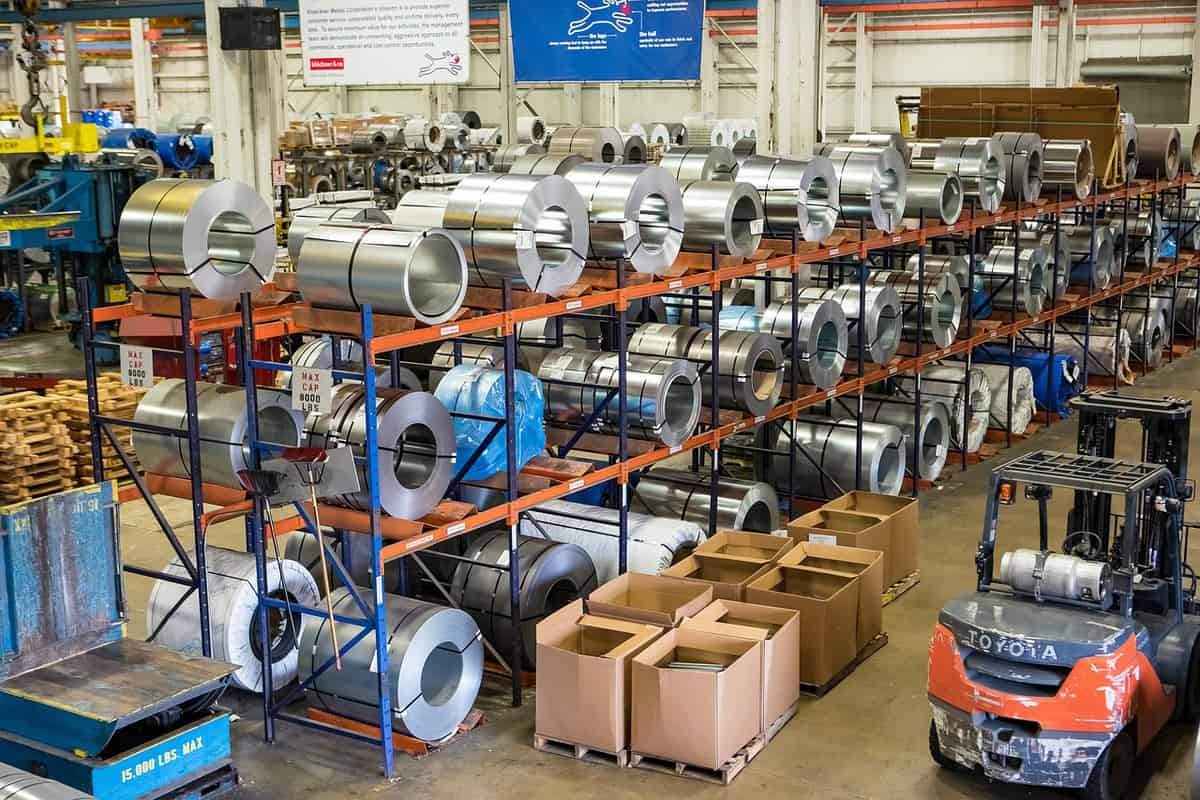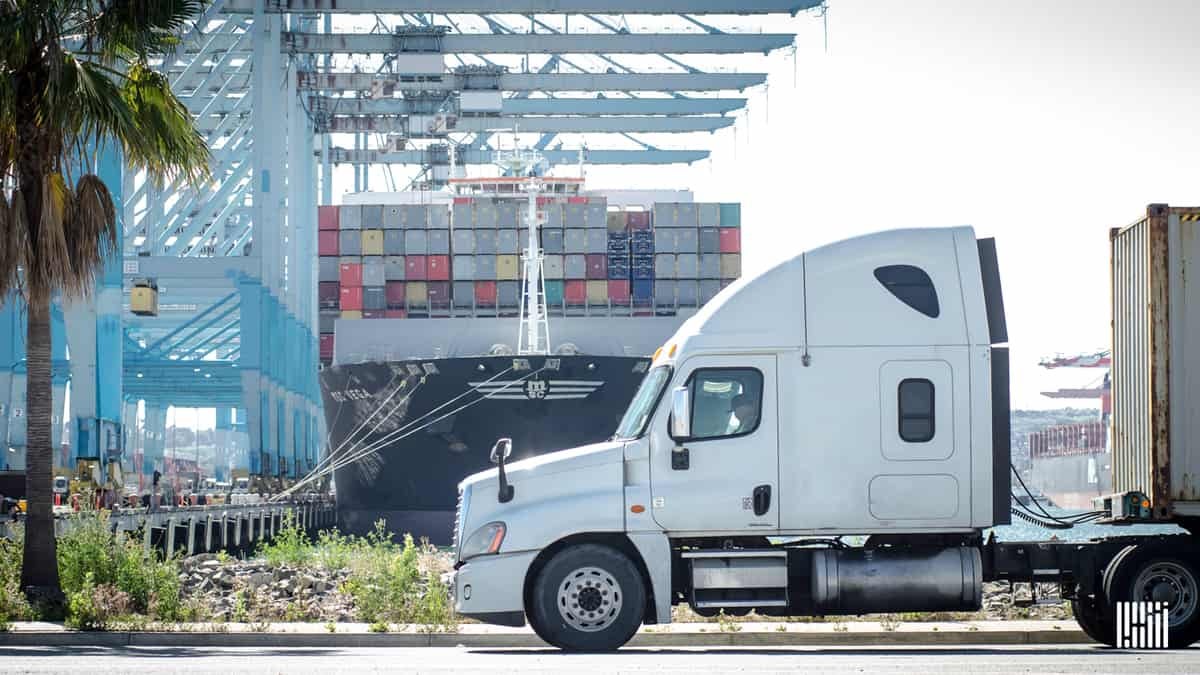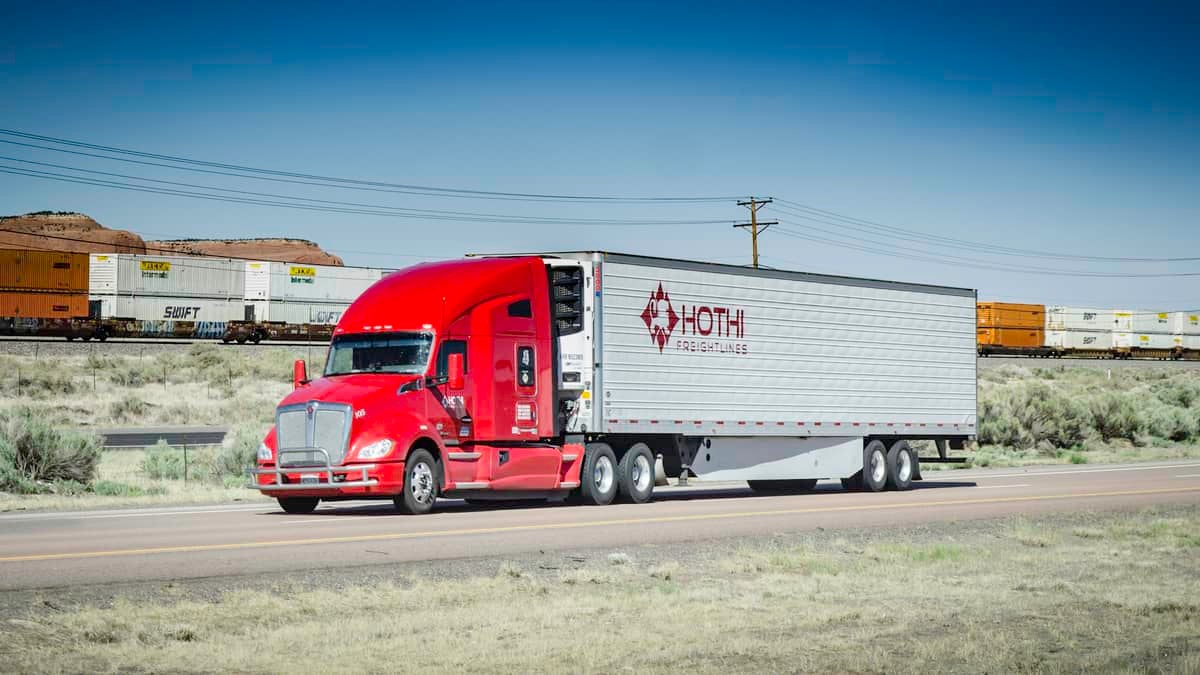Other FreightWaves Products
Zach Strickland, FW Market Expert & Market Analyst
How capital investments are reshaping supply chains
Anthony and Zach bring on Jon Bradford of Dynamo, a venture capital firm specializing in early stage investments, to discuss what effect 2020 has had on investment trends and sentiment in the supply chain.
Will the import boom lead trucking to an active ‘off’ season?
Import volumes continue to fuel the surface transportation boom. Will it last into 2021?
How do presidential elections impact the economy and transportation?
Anthony and Zach discuss the increasing concerns over the driver shortage and how presidential elections influence the economy.
Reefer outpacing van growth in second half of 2020
Reefer carrier revenues are expanding rapidly as capacity tightens faster for the temperature-controlled segment of trucking.
Carriers purchasing trailers over tractors during booming freight market
Carriers are investing in new trailers over tractors during the most recent freight boom. What does this mean for capacity in the future?
Long-haul freight boom leads to pre-peak capacity crunch
Freight volumes are not the only thing putting pressure on capacity.
How long will the import boom last?
Anthony and Zach bring on Maritime expert Henry Byers to discuss the near- and long-term impacts to the domestic freight market resulting from the record-breaking influx of shipments from Asia.
Will we see double-digit rate increases in transportation in 2021?
Trucking spot rates are averaging well over what they were a year ago implying many shippers will see rates increase next year. How much will it be?
Are spot rates peaking before the peak?
Transportation costs are hitting record levels as companies struggle to grab capacity amidst an unusually early peak season.
Could driver recruitment issues keep trucking rates elevated?
Anthony and Zach talk about driver retention and recruitment issues and how they will contribute to keeping the spot market for trucking active through the rest of 2020.
Intermodal rates go off the rails
Shippers are willing to pay more to put freight on the rail just to get it moving out of Los Angeles.
Imports will continue to drive strong trucking volumes through September
International import bookings signal continued strength in the domestic freight market.
Driver exits could extend capacity crunch
As trucking capacity tightens and spot rates rise, driver turnover increases. Are some of them leaving the industry for good?
Getting to the root of the problem!
Zach and Anthony cover the latest in the freight economy. Special guest and Senior Economist Dustin Jalbert joins to discuss the lumber market.
Tight trucking market may hamstring Laura recovery effort
Hurricane Laura hit at a time when trucking capacity is unusually tight, a fact that may hinder the recovery efforts.
In the trenches
Anthony and Zach discuss the potential impact of Hurricane Laura to the freight market and bring on special guest Chris Bryant, a flatbed owner-operator, for insight on what is happening on the road.
Ocean volumes lead domestic freight charge
Freight is getting crammed into the U.S. West Coast as fast as carriers can pick it up. How long will it last?
How long will the bull run?
Joined by special guest Zac Rogers, Anthony and Zach discuss the current freight market’s propensity to overachieve over the past few months and explore reasons why that will persist or crumble.
Will capacity return to trucking?
The last time capacity tightened to this level, capacity flooded the trucking space. Will the same outcome occur in 2020?
Wait times plummet as capacity tightens
Wait times have fallen as as shippers compete for capacity. What is the connection between capacity and detention?
Freight volumes could go higher in August
Volumes have recovered faster than many expected leading to many transportation companies posting earnings beats in Q2. There are no signs of slowing into August.
Watch out trucking, industrial sector has a pulse
Chart of the Week: Total Rail Carloads, Chemical Rail Carloads, Motor Vehicle Rail Carloads – USA SONAR: RTOTC.USA, RTOCH.USA, RTOMV.USA The latest rail carload data is showing that the industrial side of […]
The takeaway from the nation’s largest carrier beating the street
Anthony and Zach discuss the Knight-Swift earnings and what they mean for the freight economy. Anthony gives an economic update and Zach talks about the continued unexpected strength of freight volumes in the U.S.
Supply chain shuffle keeps capacity tight
Companies are cramming warehouses full of freight as they change their supply chains to better suit the post COVID-19 world. Trucking capacity tightens as a result.
No Vacancy
Anthony and Zach talk about the impact of Roadcheck week on the freight market and bring on Zac Rogers to discuss the latest Logistics Manager’s Index results showing increasing transportation prices along with declining warehouse capacity, a pattern eerily similar to 2018.
Shipping volatility causes major disruption to carrier networks
The erratic nature of the economic recovery has dramatically changed shipping behavior, which has strained carrier networks.
How will resurging COVID-19 cases affect supply chains?
Anthony and Zach talk to Chris Wolfe, CEO of PowerFleet, about how COVID-19 has impacted supply chains and what the resurgence in cases may do to inhibit their recovery.
The freight-rollercoaster continues for trucking
Capacity is almost as tight as it was during the panic buying inspired March. Could it get tighter?
How sustainable are current trucking volumes?
Anthony and Zach discuss the booming freight market and reasons why it will or will not sustain into July as well as the implications for the new insurance bill and […]
Southern California has become the hub for the domestic freight market
Southern California has become the hot spot for freight in the post COVID-19 freight market. Could it be the region to tell us what’s next?
Planes, trains, ships and trucks: What each mode is telling us about the economic recovery
Anthony and Zach talk to rail and intermodal expert Mike Baudendistel about some interesting signals from that sector as well as connecting the dots between modes.
Cass Truckload Linehaul Index implies 2020 may get tougher for many carriers
A decline in contract rates that were implemented prior to the COVID-19 outbreak may make this year tighter for carriers.
Who is driving freight rates in 2020?
Anthony and Zach discuss the dynamic between the spot and contract market as rates continue their wild ride in 2020. Do carriers, brokers or shippers control the spot market?
2018 was worse than 2020 for trucking
A lot of the recent struggles for carriers originated in what many consider to be the most profitable year.
What goes down, must come up… Wait, no.
Anthony and Zach discuss the hours of service exemption, consumer prices, and other recent macroeconomic releases. Dr. Zac Rogers makes an appearance to review the latest LMI findings and the direction of the logistics industry.
Good signs for trucking from produce?
Produce season has arrived, pushing rates higher than 2019 in many areas. Will this impact the rest of the country’s capacity?
Are production numbers lagging or leading the freight market’s recovery?
Anthony and Zach discuss what to make of the subtle increase for the May PMI and orders, while domestic freight volumes surge. Also, produce season pushes agricultural rates over 2019.
Longhaul domestic freight driving May recovery, signaling a strong June
Freight moving long distances in May might lead to a strong summer peak.
The housing and home improvement sector’s over-achievement driving optimism for recovery
Anthony and Zach discuss the surprisingly rapid recovery in the housing/home improvement sector of the economy and whether it has sustainability.
Nondurables showing more resilience as imports continue decline
Imports of nondurable goods are outperforming durable goods imports this month, which may indicate warehouses are full of their durable counterparts due to lack of demand.
Are freight volumes here to stay? The great debate continues
Chart of the Week: Outbound Tender Volume Index– USA SONAR: OTVI.USA After experiencing one of the most volatile periods in history over the past two months, freight market volumes have recovered to […]
Perspectives Throughout the Industry
Zach and Anthony go over the latest economic trends within the freight industry and bring on special guest, Zac Rogers to breakdown the Logistics Managers Index and his analysis of how the COVID-19 pandemic is effecting the industry.
Reefer capacity begins to tighten; could van follow?
Reefer capacity has started to show early signs of tightening after experiencing the loosest conditions in years in April. Will van capacity follow suit?
Could surging Chinese imports signal a full freight recovery?
Chinese imports have fully recovered. Does this mean the domestic trucking market will see a similar outcome?
The worst has yet to come for carrier financials and GDP
Zach and Anthony review some of the latest company earnings and a major economic releases which have yet to reveal the full story of the COVID-19 impact on the freight economy.
The first quarter could have been worse for many carriers without the pandemic
Many expected a worse outcome for carriers in March as a result of the COVID-19 outbreak. Ironically, the pandemic may have padded some 1Q results.
Not so fast, my friend
Anthony and Zach break down the Knight-Swift and Heartland earnings; slowing decline of freight rates and volumes and what the rise in imports mean for the recovery.
Increasing lead times could be the new “Amazon effect” and potentially a problematic sign for LTL
Carriers are getting more notice to pick up loads. Is this a result of Amazon relaxing their service expectations?
What to glean from J.B. Hunt’s surprisingly OK 1Q results, Cass, and disappointing retail sales
Anthony and Zach discuss what to make of the first major U.S. carrier to report earnings during the COVID-19 outbreak along with the recent Cass, industrial production and retail releases.
Could maritime rate increase from China signal recovery for domestic trucking?
The maritime shipping companies have been able to increase their rates amidst the COVID-19 induced shut down. Is this a sign of things to come for domestic carriers?
How the COVID-19 outbreak is hitting supply chains
Anthony and Zach have special guests Former Flex CEO and current strategic adviser to Clear A.I. Mike McNamara and FreightWaves Chief Strategy Officer JT Engstrom on to discuss coronavirus’ impact on various pieces of global supply chains and give an update on how the economy and freight market are reacting domestically.
Driver efficiency falls throughout March, even as volumes spike
Even as freight volumes surged to record levels in March, drivers spent less time driving.
Every day is a new day
Anthony and Zach discuss the swelling unemployment numbers as well as the plummeting freight volumes and what the endgame might look like for the COVID-19 outbreak.
Air cargo rates spike amid COVID-19 pandemic
Air cargo rates spike in the wake of the coronavirus outbreak. Medical supplies are in high demand while much of the air capacity is grounded.
Will the cure be worse than the disease?
With unemployment levels skyrocketing and a stimulus package on the table, Anthony and Zach are joined by Andrew Cox as they debate how the U.S. should handle the COVID-19 outbreak as a country economically, as a business, and as an individual.
Load rejections signal tightest market since 2018, but for how long?
Trucking capacity is the tightest it has been in 17 months thanks to the surging volumes, but all signs point to this being a short-lived event.
Chinese import and rail volumes and show first signs of recovery
Import volumes are showing the first signs of recovery since the initial decline in early February.
How the financial markets move transportation
Anthony and Zach bring in former fund manager Seth Holm to discuss how the volatile equities markets can hit the world of transportation and trucking.
Trucking volumes spike despite— because of—coronavirus concerns (with video)
Chart of the Week: Outbound Tender Volume Index – USA SONAR: OTVI.USA People have been clearing store shelves in parts of the country as if they were preparing for a […]
Coronavirus update and the main functions of a freight forwarder
Zach and Anthony talk about the latest coronavirus developments on transportation, the main functions of a freight forwarder and recent economic developments.
What drives trucking rates
Anthony and Zach explain the primary cost drivers of operating a trucking company and the market influences that drive the pricing volatility on both contracted and transactional freight movements. Also, an update on the coronavirus situation and what we are seeing in the economy today that may affect your life tomorrow.
Growth in long haul freight will drive tighter trucking market in 2020
Not only were volumes lower in 2019, but they traveled less miles, which compounded the impact of oversupply. Volumes have not recovered, but something else has changed that may help carriers this year.
How the spot market moves the freight economy
Spot freight may only account for 10-20% of total freight moved in the U.S., but its activity paints the picture of the entire freight market. Tom Mallon joins to discuss the direction of rates in 2020. Also; Coronavirus update along with the current state of the market as well as recent economic releases.
Diesel prices provide an unexpected boost for carriers this off-season
Diesel costs were supposed to make 2020 more difficult for struggling carriers, but wholesale fuel prices have fallen rapidly, which should help carriers in the slow season.
The Trailer Talk
Anthony and Zach, along with special guest Donny Gilbert, take a deeper dive into the freight market trailer pool and discuss the types of freight they haul, their characteristics, and their place in the broader market. Additional topics include another California regulation, coronavirus, and the surprising jump in the PMI.
Coronavirus may give trucking another headache
The coronavirus is having a far-reaching impact across the globe. The timing may make things worse for domestic trucking.
What is LTL?
Anthony and Zach break down the less-than-truckload sector and talk about its connection with truckload along with giving a quick update on the latest economic and freight market trends.
Reefer demand is thriving this winter
Reefer volumes have broken out this winter as dry van demand fades. Does this mean the sector is in for a strong recovery in 2020?
Is this the new normal?
Anthony, Zach, and special guest Kyle Lintner from K-Ratio discuss how the freight market is disconnected from the general economy; are we truly out of a freight recession; and how Freight Futures work.
New and smaller fleet growth stalls after rough 2019
New fleet growth is slowing while used truck prices collapse. Is this the first sign of contracting trucking capacity?
Straight Outta California
Zach and Anthony discuss the characteristics of the California freight market, the unintended consequences from regulations and the economic impacts from them.
California volumes collapse, capacity tightens in front of AB5; is it a coincidence?
California’s AB5 has caused significant disruption prior to the planned enforcement period. Has there been a measurable impact to the supply of carriers in the state?
January is the Monday of the year
Zach and Anthony discuss why January is so difficult to manage and why this one may be different for trucking; FMCSA and AB5 hangups; and give a economic and market update as well as projections.
How shippers should manage their bids
Market Expert Zach Strickland provides timely advice for shippers that need to choose either a carrier or a 3PL.
Drivers are safer but insurance costs continue to rise
Insurance premiums are a growing concern in the trucking industry, even as statistics show reduced incidents. What is driving the soaring insurance costs?
Shippers gave carriers less notice in 2019
Lead times fell throughout 2019 as shippers became accustomed to excessive capacity.
2019 closing on a strong note for trucking, but will it last?
The truckload sector has had a breakout December thanks to a booming holiday peak. Is this a signal of a long-term shift to the over-supplied freight market?
Die Hard is not a Christmas movie and other supply side corrections
Anthony and Zach discuss what will trim the fat in the oversupplied trucking market as well as talk about why Intermodal has not materialized as the savior of the rail volumes with Mike Baudendistel.
Celadon shutdown was a product of two freight recessions
Chart of the Week: 3-Year-Old Used Truck Prices – USA, Cass Freight Shipments Index – USA SONAR: UT3.USA, CFIS.USA At this point the news and story of Celadon, the largest truckload failure […]
What’s 10th century Korean pottery got to do with it? – Freightonomics [podcast]
Anthony and Zach discuss the recent Celadon shutdown and how it lines up with current freight market conditions; a disappointing manufacturing sector; consumers appear to be on another spending spree funded by debt.
E-commerce kills efficiency as carrier miles decline
The rise of e-commerce has increased the amount of low mileage freight, but that comes at an unexpected cost to shippers.
Empty container movements signal freight shift to the East Coast
West Coast freight volumes have been robust in 2019, but empty rail containers signal that the balance is shifting east heading into 2020.
Housing starts to build hope for downtrodden freight market
The housing and construction sectors are showing signs of life, giving truckers a rare hint of optimism for the coming months.
Reefer demand spikes as temperatures drop
Reefer demand jumps in contrast to the general freight market, despite much colder temps across the U.S.
West coast volumes crash in all modes
Freight volumes fell off a cliff at the end of October. Is this yet another reason for concern that the market may slow even further?
Intermodal rail outperforms trucking in October
The rails managed to increase rates while trucking rates continued to compress in October.
Reefer volumes trick while dry van treats
Reefer volumes have declined in 2019 as shippers have taken advantage of cheap van rates, but declining production and trade wars have hurt the cause as well.
Peak retail season looks awfully ‘flat’
Retail is expected to be the great savior of the 4th quarter economy. Hopefully retaill shipment volumes are not an indication of things to come.
Freight volumes fall to new heights
Freight volumes took a nosedive to this past week, which led to the biggest difference in annual freight volumes this year.
Manufacturing index signals slower freight market this winter
A popular manufacturing index is signalling a rough ride for trucking after the holiday season.
Rail volumes decline as trucking recovers
Trucking volumes are up YoY, while rail intermodal volumes have fallen. Now may be the time for long time competitors to explore new partnerships.
Diesel and Detroit disruptions hit trucking hard and fast
Two big events hit trucking like a hammer this week. What are the long run implications?
Small carriers expanding fleets as large carriers reduce tractor counts
Smaller carriers are snatching up the big carrier’s excess truck supply, even in a softer year. The reason is not obvious.
Trucking utilization improves while prices remain suppressed
Carriers are having less trouble keeping their drivers busy over the past month, but that has not quite translated to increased prices.
Why 2019 has been the worst year for trucking operators
2019 has been more challenging for trucking companies than any other non-recession year. Here is why.
FreightWaves releases tractor counts and new air capacity index in SONAR
FreightWaves releases several new datasets and improves on existing ones in this week’s SONAR release.
Has the Freight Recession ended?
After a disappointing first half of 2019, the freight market finally appears to be heading another direction.
Freight volumes shift to the east coast as companies attempt to navigate the trade war
The trade war with China has altered international shipping patterns, which has started to shift freight volumes to the East Coast.
Average price of diesel has become a solid barometer for freight activity, here is why
The price of diesel fuel has an obvious impact on transportation providers costs, but it also can give insight into demand for their services.
FreightWaves adds carbon emissions data to SONAR
Carbon emissions are now available in SONAR on a state level.


































